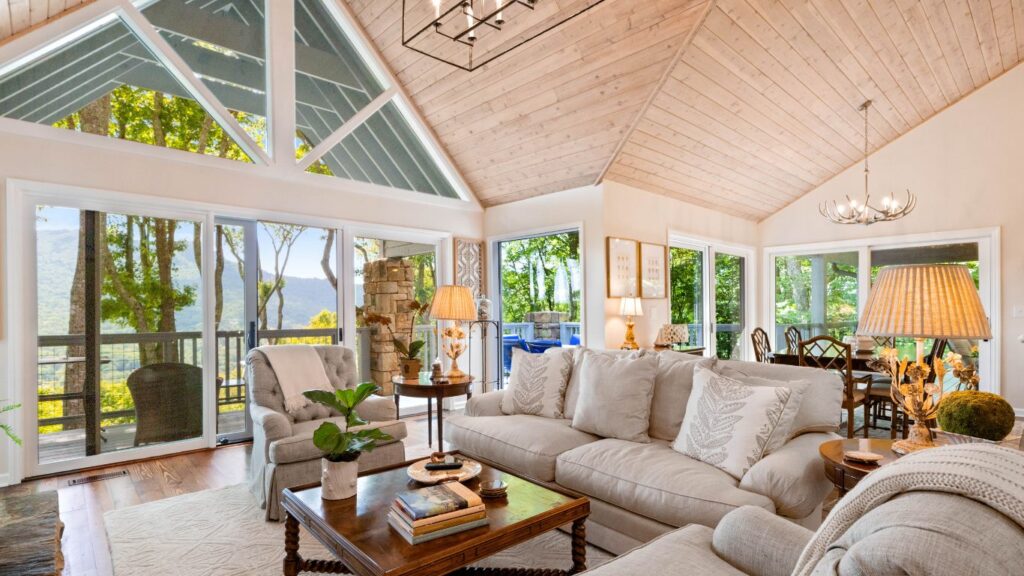Switching to green energy solutions for your home isn’t just about saving the environment—it’s also about cutting down on those ever-increasing utility bills. I’ve explored various options like solar panels, wind turbines, and other innovative technologies that can transform your home into an eco-friendly haven.
Imagine harnessing the power of the sun or wind right in your backyard. It’s not only feasible but also more accessible than ever before. Let’s dive into the practical, cost-effective ways you can make your home greener and more sustainable.
The Essentials of Green Energy Solutions for Your Home
Understanding Renewable Energy Options
- Renewable Energy Options: Solar panels, wind turbines, and geothermal systems are common renewable energy options.
- Solar Panels: Capture sunlight and convert it into electricity or heat.
- Wind Turbines: Use wind to generate electricity.
- Geothermal Systems: Utilize the earth’s internal heat for heating and cooling.
- Solar Growth: According to Energy.gov, solar installations have grown by an average of 42% per year.
- Wind Energy Increase: Wind energy has increased by over 50% in the last decade.
- Geothermal Consistency: Geothermal solutions remain consistent in areas with geothermal activity.
- Unique Advantages: Each option has unique advantages and installation requirements.
Cost and Benefits Analysis
- Initial Costs and Savings: Switching to green energy involves initial costs but offers long-term savings and benefits.
- Solar Panels: Installation costs range from $15,000 to $25,000 for an average U.S. home, providing an estimated annual savings of $600 to $800 on electricity bills.
- Wind Turbines: Installation costs range between $40,000 and $70,000, with potential savings of $4,000 to $8,000 annually.
- Geothermal Systems: Cost between $20,000 and $30,000 but can reduce energy costs by up to 50%.
- Increased Property Value: A study by the National Renewable Energy Laboratory (NREL) reveals that homes with solar panels sell 20% faster and at a 17% higher price compared to those without.
- Additional Benefits: Each option not only lowers utility bills but also increases property value and reduces carbon footprints.
Solar Power Systems
Types of Solar Panels
Various types of solar panels cater to different needs and locations. The three primary types are monocrystalline, polycrystalline, and thin-film panels.
Monocrystalline panels offer the highest efficiency, up to 22%, by using single silicon crystals. These panels suit homes with limited roof space due to their high power output and longevity, often exceeding 25 years.
Polycrystalline panels are less efficient, ranging between 15% and 17%, but they cost less compared to monocrystalline. They use multiple silicon crystals, which makes them an affordable option for larger roofs.
Thin-film panels are the least efficient, with efficiencies of 10% to 12%, but their flexible nature allows installation on various surfaces. These panels are lightweight and ideal for unconventional structures like curved roofs.
Installation and Maintenance
Installing a solar power system at home involves several key steps. First, assess your home’s energy needs by analyzing utility bills, then choose the type of panel that fits your energy and budget requirements.
A licensed installer performs a site survey to determine roof suitability, including shading, orientation, and structural integrity. Most installations take one to three days, depending on system complexity and roof conditions.
Solar panels require minimal maintenance. Regularly clean panels to remove dust, dirt, and debris, ensuring maximum efficiency. Inspections from professionals, ideally every 12 to 24 months, help identify potential issues like loose wiring and degraded seals.
Monitoring systems track your solar power production, providing real-time data to optimize performance. With proper care, solar panels can deliver consistent energy savings for decades.
Wind Energy at Home
1. The Feasibility of Residential Wind Turbines
Residential wind turbines provide a renewable energy source that can complement solar panels. For a wind turbine to be viable, the average wind speed at your home should be at least 10-12 mph. Most residential turbines range from 400W to 20kW, making them suitable for various energy needs. The ideal locations for turbines are rural or open areas, as buildings and trees can obstruct wind flow.
According to the U.S. Department of Energy, small wind turbines can reduce energy bills by 50-90% when sited correctly. Costs range from $3,000 to $50,000, depending on the turbine’s size and installation complexities. However, incentives and rebates can offset initial costs. State and federal programs, like the Residential Renewable Energy Tax Credit, can provide significant financial support.
2. Setting Up Your Wind Energy System
Setting up a wind energy system requires several key steps. First, conduct a wind resource assessment to determine the average wind speed. Tools like anemometers and wind maps provide accurate data. If wind speeds are consistent, proceed with selecting the right turbine—options include horizontal-axis and vertical-axis turbines, each with specific benefits.
Next, you’ll need to obtain necessary permits from local authorities. Regulations vary, so consult your local zoning office for specific requirements. Professional assessments ensure the site is free of obstructions and that the turbine height complies with regulations.
After obtaining permits, mount the turbine on a suitable tower, usually ranging from 30 to 140 feet tall. Taller towers capture higher wind speeds, increasing efficiency. Electrical connections must integrate with your home’s grid system, which usually requires a certified electrician. Maintenance involves regular inspections, ensuring turbines and connections remain in good condition.
By following these steps, homeowners can effectively use wind energy to reduce reliance on non-renewable sources and lower energy costs.
Exploring Additional Renewable Resources

Geothermal Heating and Cooling
Geothermal heating and cooling systems leverage the constant temperature beneath the Earth’s surface to regulate indoor climate. These systems consist of ground loops and heat pumps that transfer heat between your home and the ground. Unlike traditional HVAC systems, geothermal systems provide energy efficiency and cost savings, benefiting homeowners by reducing utility bills.
Installing a geothermal system involves drilling boreholes and laying underground pipes, which can be a significant initial investment. However, the long-term financial benefits, such as lower operating costs and eligibility for federal tax credits, make it a worthwhile option. Regular maintenance includes checking the ground loops for leaks and ensuring the heat pump operates efficiently.
Hydro Energy for Residential Use
Hydro energy for residential use harnesses the power of flowing water to generate electricity. Micro-hydro systems, which use streams or rivers, can provide a consistent energy source for homes located near these water bodies. These systems include a water turbine, generator, and control devices to convert water flow into electrical power.
To install a micro-hydro system, it’s essential to assess the water flow and head (vertical distance water falls). Permits may be required, depending on local regulations. After installation, routine maintenance such as inspecting the turbine and cleaning the intake screens ensures efficient operation. While suitable for specific locations, hydro energy offers a reliable and sustainable energy source for homeowners fortunate enough to have access to flowing water.
Conclusion
Exploring green energy solutions for your home can lead to significant environmental and financial benefits. Whether you opt for solar panels, residential wind turbines, geothermal systems, or micro-hydro solutions, each option offers unique advantages. Assessing your home’s specific needs and local conditions is essential for maximizing efficiency and cost savings. By investing in renewable energy, you’re not only reducing your carbon footprint but also contributing to a sustainable future. Regular maintenance ensures that these systems operate efficiently, providing long-term benefits. Embrace green energy and transform your home into an eco-friendly haven.

 Jasmine Wellish is a key contributor at Info Wave Circle, known for her insightful articles and creative approach to technology and societal issues. With a deep passion for innovation and a knack for storytelling, Jasmine plays a crucial role in communicating the vision and achievements of Info Wave Circle to a broader audience.
Since joining the team, Jasmine has been instrumental in crafting compelling content that highlights the transformative potential of technology. Her work not only informs but also inspires the Info Wave Circle community and beyond. Jasmine’s dedication to exploring new ideas and her ability to convey complex concepts in an engaging manner make her an invaluable asset to the organization’s mission of fostering innovation and societal progress.
Jasmine Wellish is a key contributor at Info Wave Circle, known for her insightful articles and creative approach to technology and societal issues. With a deep passion for innovation and a knack for storytelling, Jasmine plays a crucial role in communicating the vision and achievements of Info Wave Circle to a broader audience.
Since joining the team, Jasmine has been instrumental in crafting compelling content that highlights the transformative potential of technology. Her work not only informs but also inspires the Info Wave Circle community and beyond. Jasmine’s dedication to exploring new ideas and her ability to convey complex concepts in an engaging manner make her an invaluable asset to the organization’s mission of fostering innovation and societal progress.
